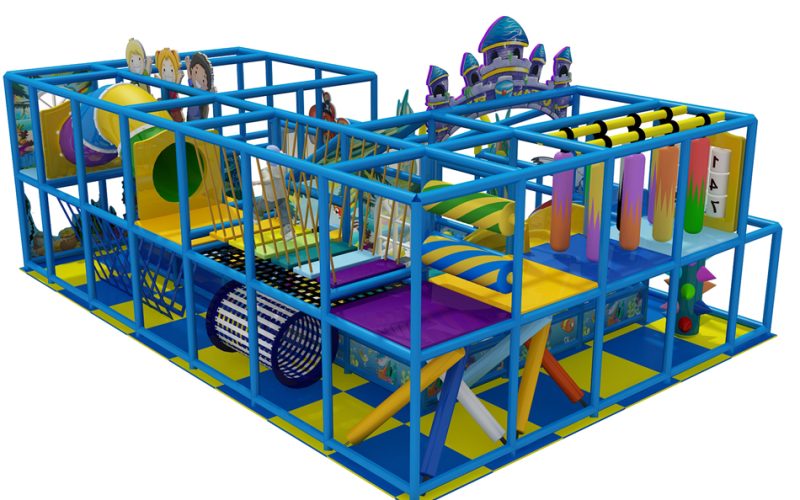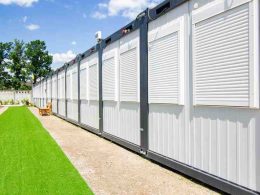Introduction
The global indoor play industry is undergoing a dramatic transformation, fueled by innovation, safety awareness, and rising demand for immersive, screen-free environments. A soft play equipment manufacturer in 2025 needs to be more agile, tech-savvy, and sustainable than ever before to stay competitive. The trends shaping the future of this industry are not only redefining design and production but also reshaping customer expectations and business models.
Let’s explore the top trends influencing soft play equipment manufacturers in 2025.
Smart Playgrounds with Embedded Technology
One of the biggest trends redefining soft play equipment in 2025 is the integration of smart technology. Equipment is no longer just about physical fun—it’s becoming interactive, educational, and even data-driven. From RFID wristbands that track a child’s movement within a play area to embedded sensors that provide real-time safety feedback, smart features are enhancing the play experience and offering new ways for operators to monitor usage.
AR (Augmented Reality) and interactive projection games are also gaining traction, turning ordinary soft play zones into multi-sensory adventures. These technologies engage children while encouraging movement, creativity, and collaboration.
Safety Innovations and Compliance Standards
Safety continues to be the cornerstone of soft play manufacturing, but in 2025, it has reached new heights. Equipment is now being designed with antimicrobial materials, AI-driven hazard detection, and modular layouts that allow for easier sanitation and maintenance.
Global safety certifications and compliance standards are also becoming stricter. Manufacturers must align with updated ASTM, EN, and ISO guidelines, especially for international exports. As a result, quality assurance processes have become more rigorous, and automated inspection tools are more widely used during production.
Customization and Modular Design
Another key trend in 2025 is hyper-customization. Buyers, especially from urban markets, are looking for designs that match their brand aesthetics and available space. Soft play manufacturers are responding with modular equipment that can be tailored in size, theme, color, and function.
This trend extends to multi-functional play structures that combine physical, cognitive, and sensory elements. Modular play zones now often include components like quiet areas for neurodivergent children, climbing features for older kids, and sensory panels for inclusive play—all within a cohesive system that can be reconfigured as needed.
Eco-Friendly Materials and Sustainable Manufacturing
Sustainability is more than a buzzword—it’s a core principle guiding manufacturers in 2025. Parents and operators alike are demanding eco-friendly options, and manufacturers are rising to the challenge.
Recyclable foam, PVC-free vinyl, and biodegradable fabrics are now widely used in soft play equipment. Additionally, energy-efficient production methods and low-waste packaging are standard practices for forward-thinking manufacturers. Some brands are even offering “green certifications” to help buyers make environmentally responsible choices.
Sustainability is also influencing the life cycle of the product. More manufacturers are building longer-lasting equipment and offering refurbishment services to extend product usability.
Themed and Immersive Environments
Soft play centers in 2025 are more than play spaces—they’re immersive storytelling experiences. Manufacturers are developing themed environments that transport children into fantasy worlds like underwater kingdoms, jungle safaris, space missions, and fairytale lands.
3D sculpted elements, murals, LED lighting, sound effects, and themed costumes enhance the immersive quality of the play zones. This theatrical approach not only delights children but also gives operators a strong marketing advantage and the ability to attract more visitors.
Digital Design and Virtual Prototyping
Gone are the days of relying solely on blueprints or hand sketches. In 2025, manufacturers are embracing advanced design software and virtual prototyping tools like BIM (Building Information Modeling) and VR-based walkthroughs.
These tools allow clients to visualize their customized play area in real-time, making the design process more collaborative and precise. Clients can walk through a 3D-rendered play zone, tweak elements instantly, and make better-informed decisions before manufacturing even begins.
Inclusion and Accessibility in Play Design
Inclusivity is a defining principle in modern playground design. In 2025, manufacturers are embracing the concept of “play for all,” ensuring their equipment caters to children of varying physical abilities, sensory sensitivities, and developmental levels.
Soft play spaces now feature sensory rooms, adaptive play elements, wheelchair-accessible entries, and quiet zones. This not only aligns with regulatory requirements in many regions but also reflects a growing societal shift toward universal design and social equity.
Global Expansion and Localization
While Europe and North America remain major markets, the soft play industry in 2025 is experiencing rapid growth in Asia, the Middle East, and Africa. To meet diverse regional needs, manufacturers are tailoring designs and materials to local climates, cultural preferences, and safety regulations.
This expansion also comes with challenges such as cross-border logistics, currency fluctuations, and import duties. Manufacturers are increasingly forming regional partnerships or setting up local assembly units to improve delivery timelines and service responsiveness.
Subscription Models and Rental Options
Innovative business models are emerging in 2025 to make soft play more accessible to smaller businesses. Subscription-based leasing models allow play centers, schools, and malls to upgrade their equipment periodically without high upfront investment.
Rental options for seasonal events, pop-up installations, and festivals are also gaining popularity. Manufacturers are tapping into this trend by offering flexible equipment packages with service and maintenance included.
Data-Driven Manufacturing and Predictive Maintenance
IoT (Internet of Things) and AI are transforming manufacturing operations by making them more efficient and predictive. Equipment embedded with sensors can now send performance data back to the manufacturer, alerting them about potential wear and tear.
This data-driven approach enables predictive maintenance, improving safety and reducing downtime. Additionally, manufacturers can analyze usage patterns to inform future design decisions and product development.
Final Thoughts
The landscape for soft play equipment manufacturers in 2025 is dynamic, innovative, and deeply customer-centric. Companies that embrace technology, customization, sustainability, and inclusivity will stand out in a competitive market. With global demand for engaging, safe, and immersive play environments on the rise, the industry is poised for continued growth—and the most agile manufacturers will lead the way.











